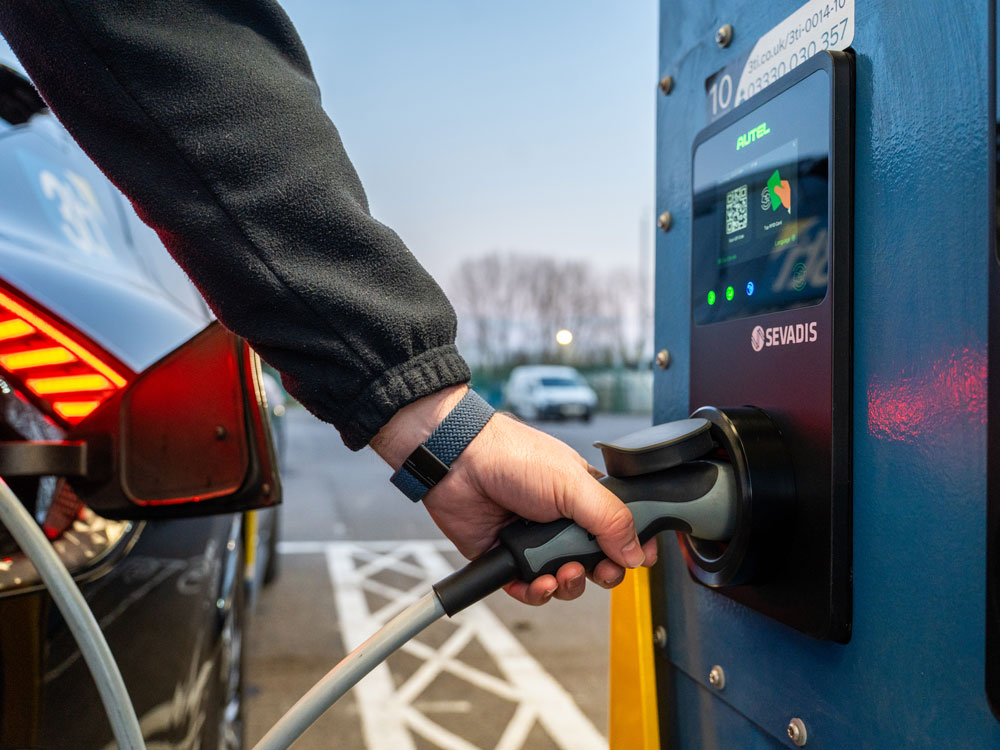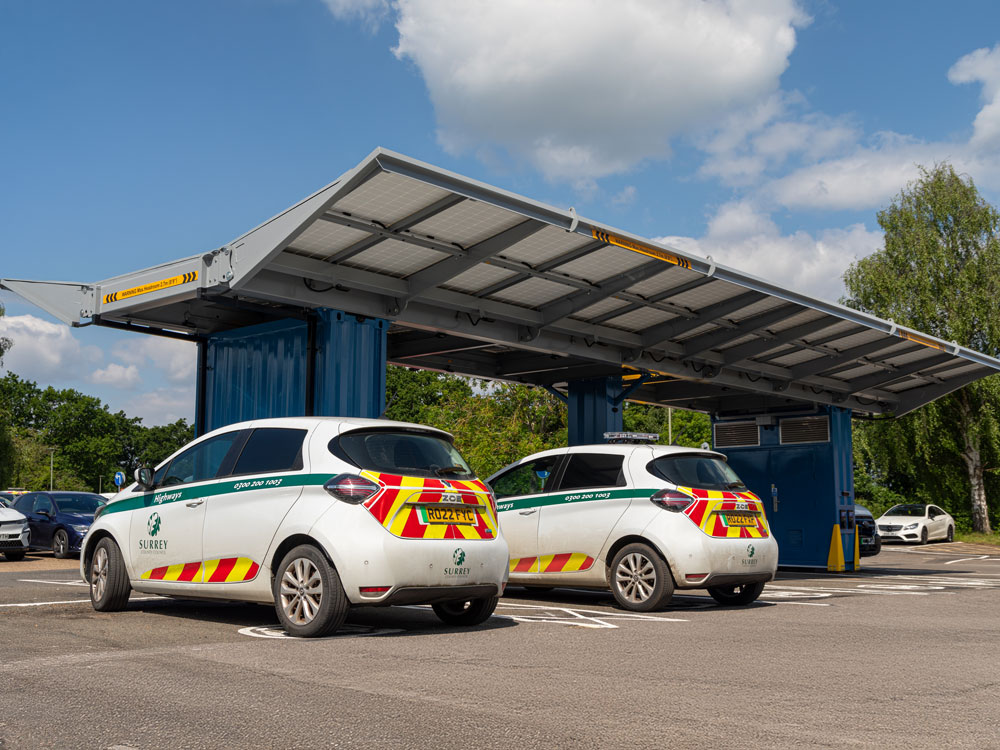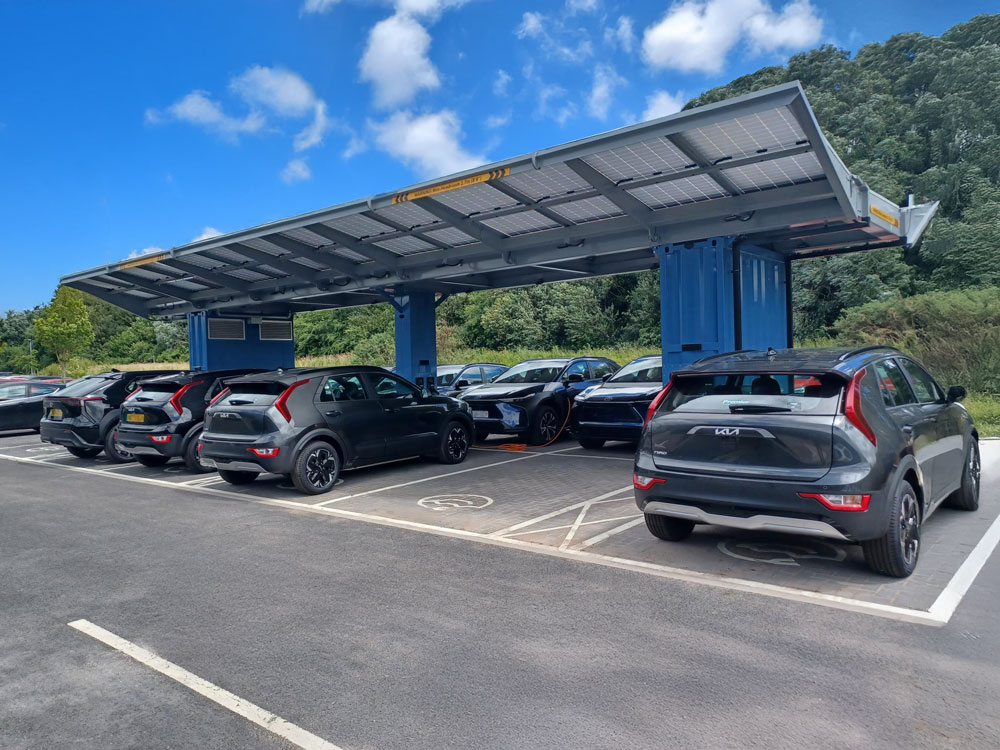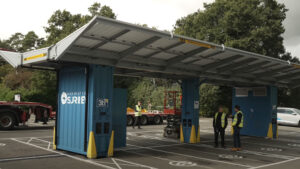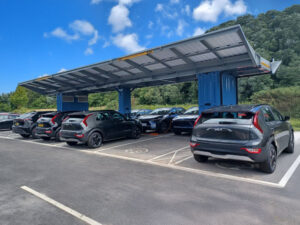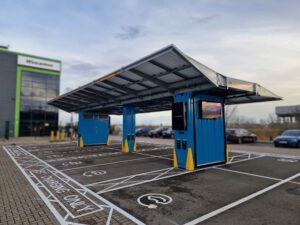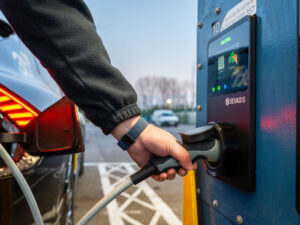When announcing the end of its plug-in grant last week, the UK government cited its success in “kickstarting the UK’s electric car revolution and supporting the sale of nearly half a million electric cars.”
The Department for Transport’s announcement stated an intention to reallocate grant funding to target the expansion of public EV infrastructure. Great news for UK EV drivers, potential adopters and fleet operators. We urgently need to make real strides in accelerating EV take-up.
However, to develop an infrastructure that best supports real-world EV use in the UK, that investment must include increased support for workplace and destination charge points. The alternative, an infrastructure rollout focused on a premium rapid charging service station model, will contribute to rising electricity and charging costs.
We must change the mindset. We are used to quickly filling up at a forecourt when we need more petrol or diesel. Vigorously encouraged by the oil giants, because they make money in the shop while we wait 20 minutes to charge up, that familiar habit isn’t the answer for EV charging.
Cars spend 95% of the time parked; that’s when we should be charging our EVs.
Convenient charge points at workplaces, cinemas, gyms, town centre car parks and tourist attractions, for example, would enable EV drivers to charge where they stop, rather than stopping to charge. Harnessing longer dwell times enables drivers to take advantage of lower cost, lower carbon electricity, particularly when using locally generated power in the form of Solar Car Parks.
Widespread workplace and destination charging can fill a huge gap in the UK’s EV infrastructure. The 2030 ban on the sale of new internal combustion engine vehicles means we will need around 2.8 million public EV charge points by 2035, but according to Zap-Map there are currently fewer than 54,000. Installing rapid public charge points is expensive and and disruptive and encourages EV drivers to charge at peak times (during their commutes), needing expensive infrastructure upgrades and using dirtier peak-time electricity.
Most importantly, as EV sales increase, the ratio of charge points to EVs is actually falling. Recent figures suggest that there is approximately one public charge point for every 52 EVs in the UK, against a target of 1:10 and in second-to-last place out of the top 10 EV markets globally. As EV sales accelerate, the current 17,000 public charge points-a-year roll-out is clearly not sufficient. So, while I support the government’s intention to focus on this area, we must consider focussing public funds on charging in the right way.
Infrastructure that supports destination and workplace charging levels the playing field for EV owners. Around 50% of households will be unable to charge at home and it is unfair for these drivers to be limited to premium, forecourt experiences. A forecourt-based EV ownership model negates the cost advantages of electrification versus petrol or diesel, with drivers paying 2-3 times the cost of home charging.
In contrast, when combined with destination and workplace EV charge points, technologies such as solar generation and battery energy storage systems are able to reduce draw on the grid at peak times, optimise the speed and carbon intensity of charging, and provide a source of renewable low-cost energy. Solar and battery-boosted charging of this type can also reduce energy costs for site operators and provide greater control over energy supply and the costs passed on to drivers. For example, many businesses are choosing to provide free or subsidised EV charging as an employee perk or customer incentive. This not only benefits EV drivers and encourages increased take-up but supports businesses with a broader transition towards net-zero targets.
Finally, a shift away from the forecourt model is also beneficial in terms of EV durability. Regular rapid charging with 50-250 kW increases battery degradation and reduces overall driving efficiency, whereas charging at 11-22 kW at a workplace or destination charger avoids the unforgiving rapid charge-discharge pattern.
Forecourts do have an important role within the UK’s EV infrastructure but should be reserved for those occasional on-route top-ups. Shunning a daily reliance on the fastest charge at the highest cost in favour of charging where the car is parked for several hours will be more effective for all, and delivers a more sustainable network that provides a broad range of benefits to drivers, car park and fleet operators.
In doing so, we’ll adopt a more equitable and sustainable EV charging model for the benefit of all stakeholders.


